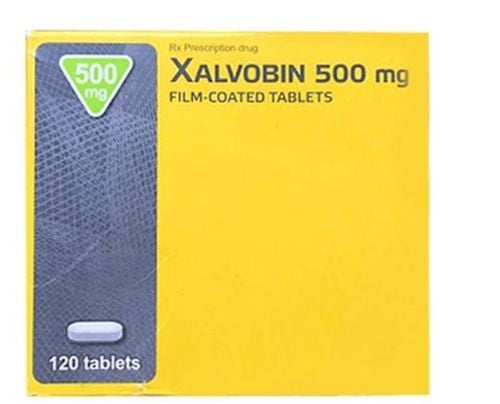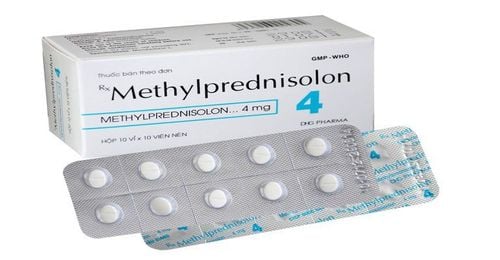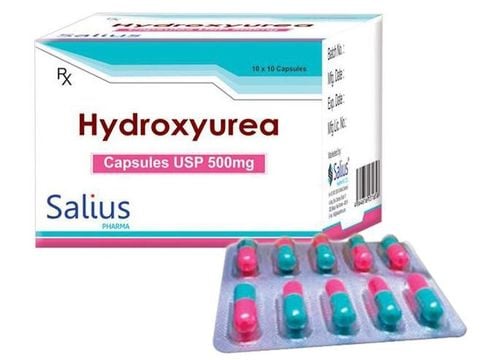This is an automatically translated article.
Buprenorphine belongs to a group of narcotic pain relievers, also known as opioid pain relievers. Buprenorphine comes in a variety of dosage forms, such as patches, sublingual tablets, and injections, and is used to relieve pain from surgery or illness.1. What is Buprenorphine?
Buprenorphine belongs to the group of narcotic pain relievers (opioid group). The composition of the drug has analgesic and central nervous system effects similar to Morphine. However, the degree of drug dependence of buprenorphine is lower than that of morphine and when the drug is stopped, withdrawal symptoms occur slowly, not as severe as morphine.
Buprenorphine detox pills are prepared in many different forms, suitable for therapeutic use, including:
Buprenorphine patch releases drug through the skin with concentrations from 35 - 52.5 - 70 micrograms/ hours, used for 96 hours or the content of 5 - 10 - 20 micrograms/hour, used for 7 days. Buprenorphine patch is also indicated for use in combination with other narcotic pain relievers such as Acetaminophen or Ibuprofen during treatment. However, this combination requires expert advice. Buprenorphine sublingual tablets are available in 200 or 400 micrograms. Buprenorphine is administered intravenously or intramuscularly with a concentration of 300 micrograms/ml. Buprenorphine is indicated for the relief of moderate to severe pain following surgery or due to cancer, myocardial infarction, trauma (accidental), trigeminal neuralgia, acute pain and chronic ureteral stones. Buprenorphine is also used to aid withdrawal in people who are addicted to opiates or who are dependent on other opioids.
2. How to use and dose Buprenorphine
Depending on the dosage form, the way to use and the dose of Buprenorphine will be different, specifically as follows:
Buprenorphine intramuscular or intravenous injection: For children over 13 years old and adults, the dose is from 0.3 - 0.6mg/time, each injection 6-8 hours apart. Reduce dose by half in patients at risk of respiratory depression and caution should be exercised when administering intravenously. The maximum dose of 0.6 mg should be administered intramuscularly only and there is no risk of respiratory depression. For younger children, administer intramuscularly or slowly intravenously at a dose of 2 to 6 micrograms/kg body weight, with an interval of 6 to 8 hours between each injection. Buprenorphine tablets sublingual or intramuscular: Mainly used in people after surgery with an initial intramuscular dose of 0.3mg/time and a booster injection after 30-60 minutes and 4-6 hours apart. Sublingual with a dose of 0.2 - 0.4 mg / time, 6 - 8 hours apart. Buprenorphine patch: Primarily used in adults over 18 years of age with chronic pain. For patches that release 35 to 70 micrograms/hour, the starting dose should not exceed 35 micrograms/hour in previously opioid-naive patients. In opioid-experienced patients, the initial dose should be based on response to medication within the last 24 hours. After 96 hours, the Buprenophine patch should be changed and the old patch should be avoided for at least 6 days. Overdose of buprenorphine can cause central nervous system depression with respiratory system manifestations, hypotension, bradycardia, and constricted pupils. At this time, the patient needs to be monitored for heart and breathing, respiratory support and airway clearance. If necessary, the patient can breathe oxygen and use antihypertensive drugs.
3. Buprenorphine withdrawal side effects
In some cases, Buprenophine can also cause unwanted side effects, with a specific frequency of occurrence as follows:
Common: Hypotension, nausea, dry mouth, constipation, hypoventilation . Some reported side effects of buprenophine include atopic dermatitis, exanthema and urticaria. Uncommon: Allergies, hypertension, arrhythmia on electrocardiogram. More severe can cause respiratory depression, difficulty breathing, apnea. Rare: Hallucinations, depression. If you have any unusual symptoms after taking buprenorphine, you should report it immediately or contact your doctor or pharmacist as soon as possible.
4. Some notes when using Buprenorphine
Buprenorphine's main effect is acting on the brain to change how it perceives and responds to pain, so patients who want to use Buprenorphine need to have a specific prescription from a doctor to be allowed to use it. Buprenophine should not be used in people with hypersensitivity to its components, lung damage or syndromes of respiratory impairment (COPD, cardiopulmonary disease, decreased respiratory reserve, low blood oxygen ...) , are taking other respiratory depression drugs concurrently, myasthenia gravis, delirium, people being treated for drug addiction or opioid dependence. People with hypothyroidism, myxedema, chronic kidney diseases, alcohol poisoning, delirium, toxic psychosis, prostate enlargement and urethral stricture should be cautious when using buprenophine. Patients with central nervous system impairment, traumatic brain injury, intracranial injury, or other possible cases of increased intracranial pressure need careful evaluation and caution when taking Bupronophine because it can increase blood pressure. cerebral fluid capacity. People with severe liver failure need periodic liver function tests while using bupronophine. Note, when using the Buprenophine patch, the level of drug absorption through the skin will increase as the temperature increases. Therefore, it is necessary to control the temperature and not allow the skin to be treated with a sudden increase in temperature. Patients experiencing side effects when using the Buprenophine patch should be monitored for 30 hours after patch removal. When using the Buprenorphine patch, the patient should be careful not to apply it to the burn wound, cut, or scratch, avoiding areas with irritated or damaged skin. Should choose a hairless and dry skin area when applying the medicine. Women who are pregnant or breast-feeding should only use buprenorphine when absolutely necessary. If the drug is used during pregnancy, the newborn baby needs to be monitored for a long time. If the drug is used during lactation, breastfeeding should be discontinued. Limit activities of driving or operating or operating machines as buprenorphine may impair alertness or coordination. Buprenorphine may interact with and increase CNS depression when administered with anesthetics, opiate receptor agonists, antihistamines, sedatives, hypnotics, or tranquilizers. Therefore, it is necessary to reduce the dose of these drugs when co-administered with buprenorphine. Buprenorphine should not be used together with barbiturates. Buprenorphine withdrawal medication may interact with droperidol, fentanyl, naloxone and increase the analgesic effect of buprenorphine; cause respiratory failure and cardiovascular collapse when used concomitantly with diazepam; cause respiratory depression, lethargy, bradycardia when taking lorazepam before surgery; increased CNS depressant effects when used with monoamine oxidase (MAO) inhibitors; increase the effect of local anesthetics; increased plasma concentrations of buprenorphine when co-administered with ketoconazole, antivirals or CYP3A4 inducers. In the process of taking the drug, patients should not drink alcohol because it can increase the inhibitory effect of the central nervous system and cause sedation of the drug. Do not eat grapefruit and grapefruit-containing products while taking buprenorphine because it may increase the concentration of the drug in the serum. For buprenorphine sublingual tablets, do not eat or drink until the medicine has completely dissolved. In all cases, patients should tell their doctor about any medications, herbal products or supplements they have been taking before taking buprenorphine. Buprenorphine is used to relieve moderate to severe pain due to surgery or cancer pain, pain from trauma, pain from a heart attack or trigeminal neuralgia. Patients should strictly follow the instructions on dosage and use of the drug from medical professionals to achieve the best treatment effect.
Please dial HOTLINE for more information or register for an appointment HERE. Download MyVinmec app to make appointments faster and to manage your bookings easily.













